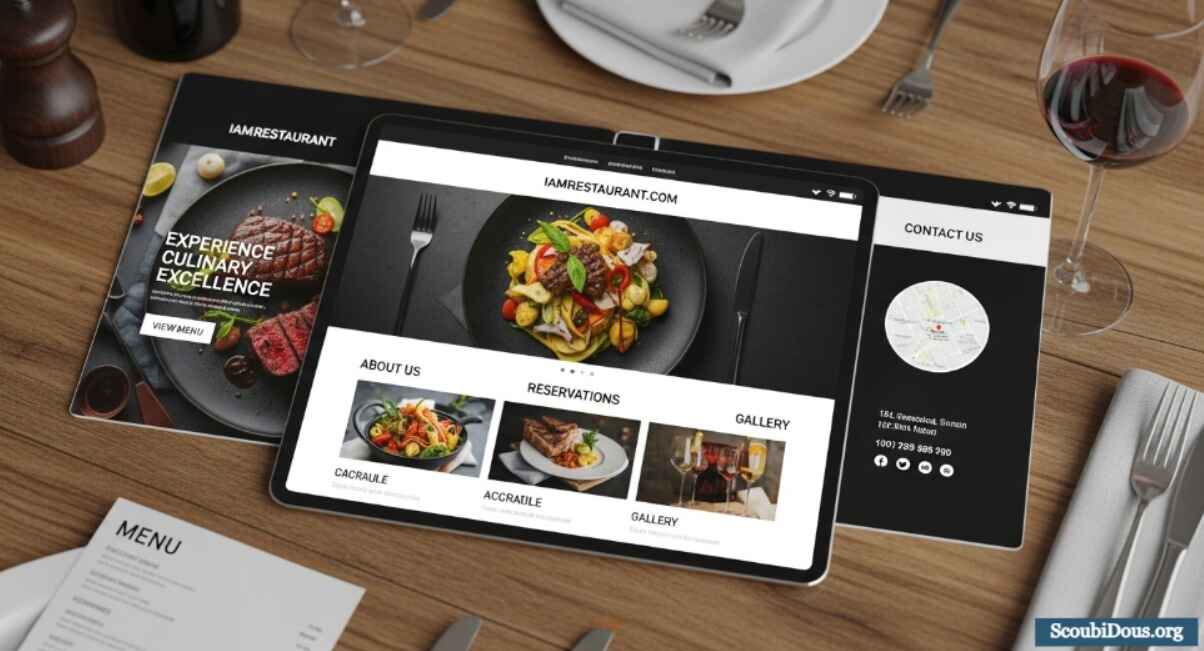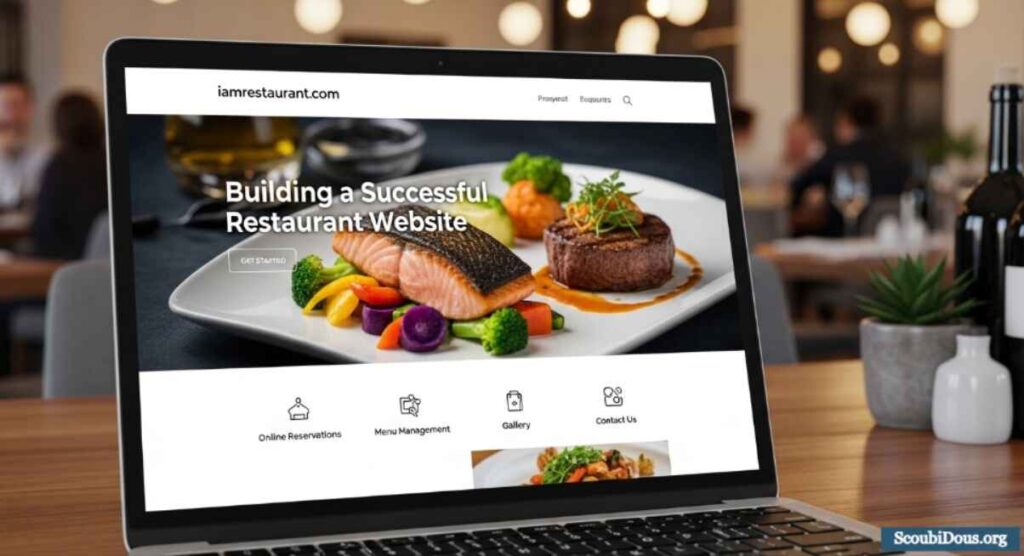Introduction
In today’s digital-first world, a restaurant’s success is no longer determined solely by location, menu, or in-house service. The online presence—how customers discover, browse, order, and engage—has become equally critical.
That’s where iamrestaurant.com enters the stage. This article serves as your comprehensive guide to iamrestaurant.com: what it offers, how it works, best practices, real-world use cases, and how to maximize its potential.
We’ll walk you through the features, strategies, and pitfalls, equipping you with actionable insights to leverage iamrestaurant.com effectively.
Whether you are a restaurateur, a digital marketer in the food & beverage sector, or a site owner evaluating restaurant website platforms, this guide is built to inform and empower.
What Is iamrestaurant.com?

At its core, iamrestaurant.com is a platform (or domain) geared toward enabling restaurant businesses to establish, manage, and grow their digital presence. It may include website templates, ordering systems, reservation modules, menu management, marketing tools, and more.
When we mention iamrestaurant.com, we refer not just to the web address, but the ecosystem of services and capabilities under that brand.
Core Objectives of iamrestaurant.com
- Digital branding foundation: Provide a polished, user-friendly website for restaurant owners.
- Operations support: Offer back-end tools for menu updates, order tracking, table reservations, etc.
- Marketing & conversion tools: Facilitate promotions, email campaigns, SEO, and analytics.
- Integration & scalability: Allow integration with POS systems, delivery services, and third-party aggregators.
Who Should Use iamrestaurant.com
- Independent restaurants seeking an online presence
- Restaurant groups or chains wanting consistency across locations
- New restaurants launching digitally
- Food entrepreneurs expanding into delivery or reservation-based models
Why Restaurants Need a Platform Like iamrestaurant.com
The Shift to Digital Ordering & Reservations
- Consumer behavior: A growing share of customers prefer to browse menus or order online before visiting a restaurant.
- Mobile usage: Many diners discover or research restaurants via mobile devices.
- Efficiency & error reduction: Automated ordering cuts down on human mistake in phone orders or in-person miscommunication.
Competitive Differentiation
With many restaurants offering similar food, your digital experience can set you apart. A slick, fast, mobile-friendly site built via iamrestaurant.com can signal professionalism and build trust with customers.
Operational Efficiency
Centralizing menu management, order tracking, analytics, and reservations eliminates redundancy and fragmentation across multiple apps or spreadsheets.
Analytics & Marketing Insights
Platforms like iamrestaurant.com often include analytics dashboards (visitors, order volumes, conversion rates) and marketing tools (email capture, campaign modules), enabling data-driven decision making.
Key Features and Capabilities of iamrestaurant.com
Below is a breakdown of typical modules and functionalities you should expect in a robust iamrestaurant.com offering.
| Feature Module | Description / Capabilities | Importance |
| Website builder & templates | Design themes tailored to restaurants, drag-and-drop editors | Enables non-technical owners to build a polished site |
| Menu management | Add, edit, categorize menu items; specials; images; prices | Ensures your offerings are current |
| Online ordering & payment | Integration of takeout/delivery ordering, secure payment gateway | Revenue channel; convenience for customers |
| Reservation system | Table booking, availability calendar, notifications | Helps manage seating and reduce wait times |
| Marketing tools | Email newsletters, promotions, loyalty programs | Drives repeat business & customer retention |
| SEO tools | Title tags, meta descriptions, and structured data support | Improves organic search performance |
| Analytics & reporting | Traffic, order conversion, customer demographics | Enables insights and optimization |
| Integration & APIs | POS integration, third-party delivery services, loyalty systems | Avoids double entry, improves ecosystem connectivity |
| Mobile optimization | Responsive design, mobile checkout workflows | Critical in an era of smartphone users |
| Security & compliance | SSL, PCI compliance, data protection | Builds trust and ensures regulatory adherence |
Example Use Case
Consider a mid-sized bistro that adopts iamrestaurant.com. The owner can:
- Launch their site using a mobile-friendly template
- Upload menu items and images
- Turn on online ordering and connect with a payment gateway
- Enable table reservations for dinner service
- Send promotional emails when new dishes launch
- Monitor analytics weekly and adjust marketing spend
This workflow elevates what would otherwise be disjointed pieces (menu PDFs, separate ordering apps, reservation calls) into a unified digital presence.
How to Structure Your iamrestaurant.com Deployment

To maximize success, consider the following phased approach:
Discovery & Planning
- Define goals: Are you focusing on orders, reservations, brand awareness, or foot traffic?
- Target audience: Who are your ideal diners (locals, tourists, families, couples)?
- Competitive analysis: Survey local restaurant websites—what works, what doesn’t?
- Branding & assets: Prepare high-quality photos, copy, logos, color scheme.
Setup & Configuration
- Theme & layout selection: Choose a template aligned with your brand.
- Menu & pricing upload: Add high-resolution images, descriptions, categories.
- Enable ordering & payment: Connect to your preferred payment gateway.
- Reservation setup: Configure operating hours, booking slots, seating layout.
- SEO basics: Write meta titles/descriptions, alt text for images, include structured data hints.
- Testing: Perform test orders, test bookings, and check responsiveness on mobile.
Launch & Promotion
- Soft launch: Invite staff, family, and loyal customers to test the site.
- Promotional campaigns: Announce “online ordering now live” offers via email or social media.
- Offline signage: Let in-store diners know “Order online at iamrestaurant.com.”
- Incentives: Offer welcome discounts for first online orders to drive adoption.
Monitoring & Optimization
- Weekly metrics review: Track order volume, conversion rate, and average ticket value.
- UX testing & feedback: Ask real customers to walk through the flow and note friction points.
- Menu tweaks: Promote high-margin items, remove underperformers.
- SEO & content marketing: Add blog content, FAQs, local pages, schema markup.
- Iteration: Based on data and feedback, iterate on layout, promos, and features.
Conclusion
A strong digital presence is no longer optional for restaurants—it’s essential. iamrestaurant.com offers a comprehensive platform that unifies website design, online ordering, reservations, marketing, and analytics. When deployed thoughtfully, it can streamline operations, enhance customer experience, and drive revenue growth.
This article has walked you through what iamrestaurant.com is, why it’s needed, how to deploy it, SEO strategies, real-world use cases, pitfalls, and FAQ-style answers. To succeed, focus on real customer experience, iterate based on data, and maintain a high standard of trust, usability, and clarity.
If you decide to move forward, start with the planning phase, build around customer workflows, and commit to ongoing optimization. Done well, iamrestaurant.com can become the digital foundation for a thriving restaurant business.


